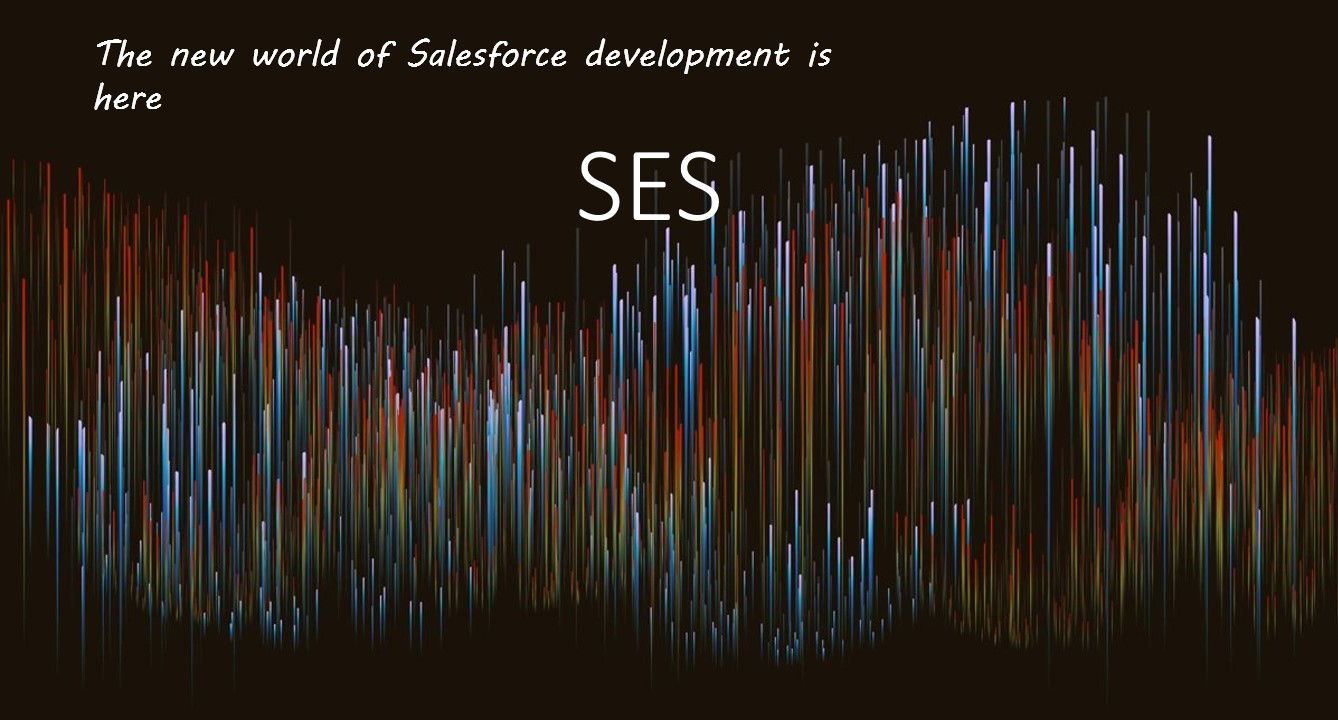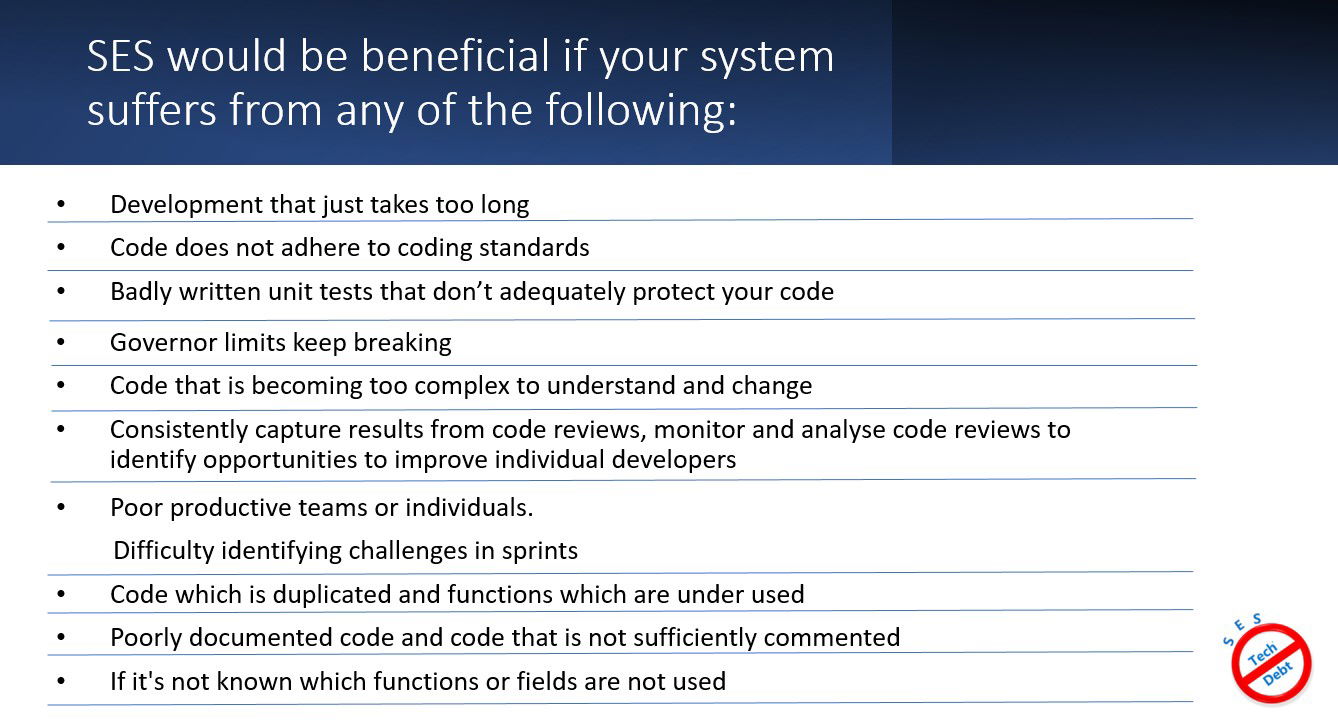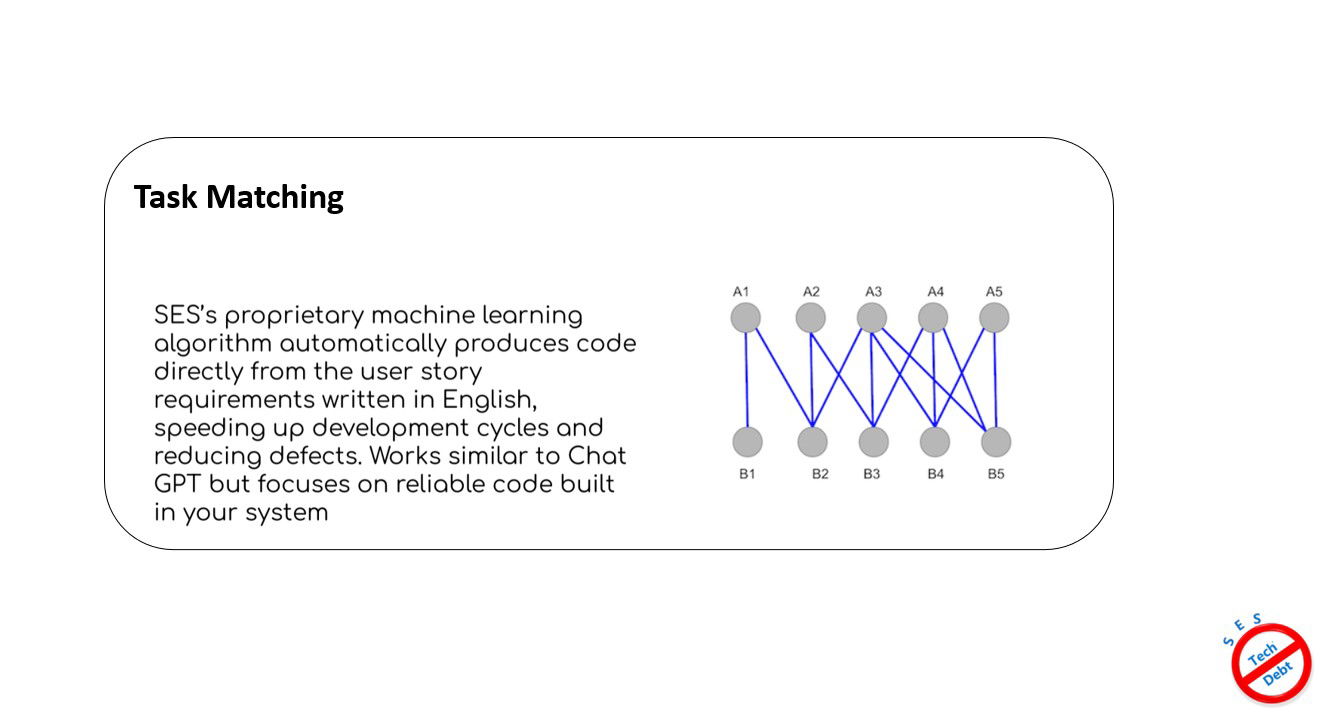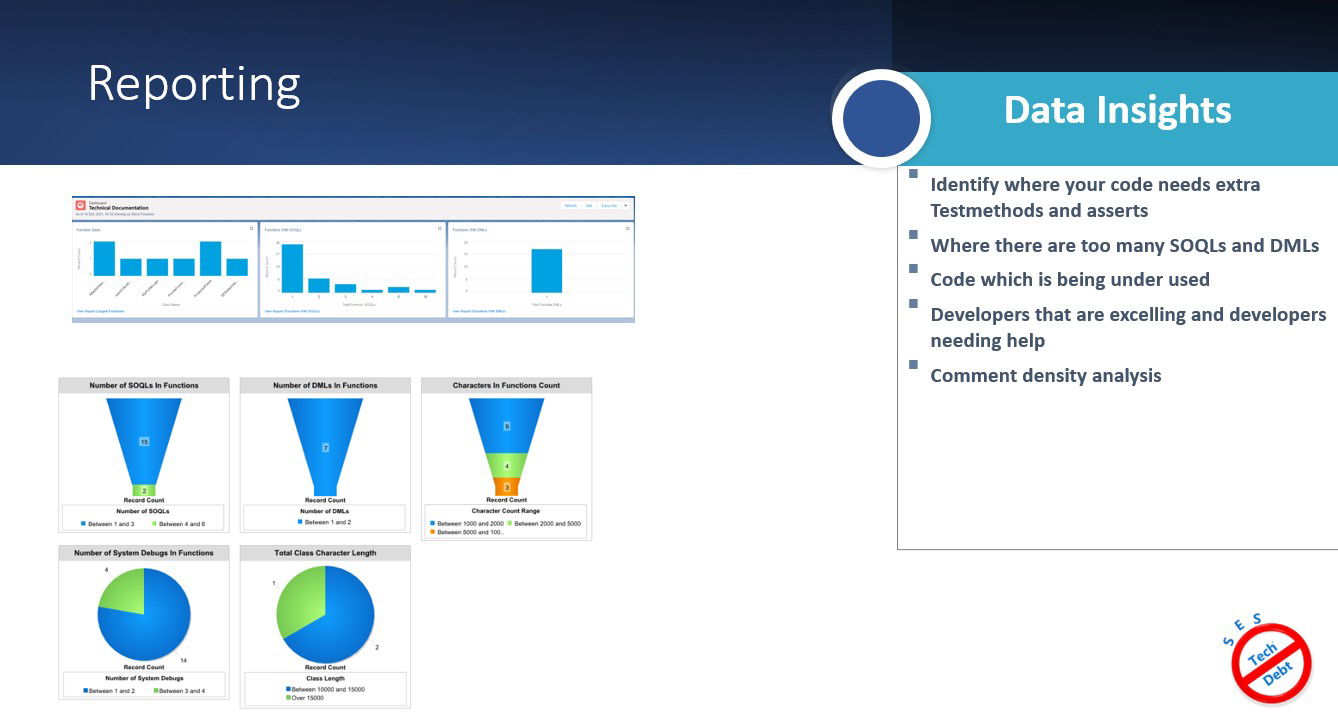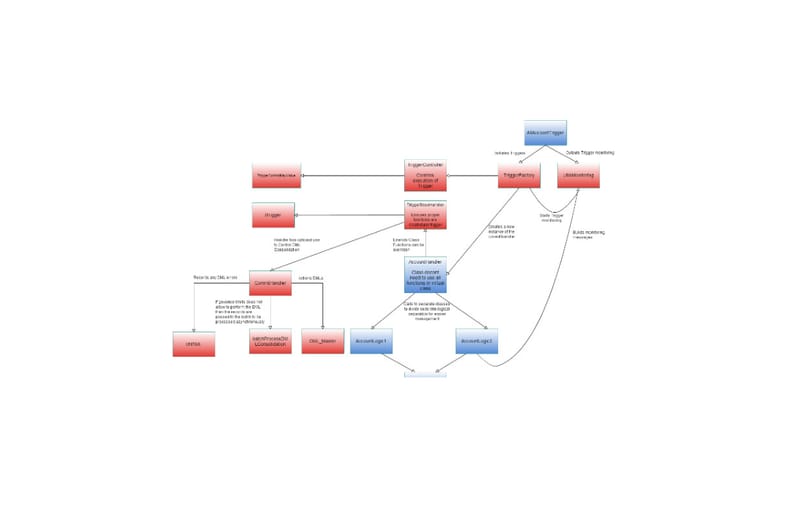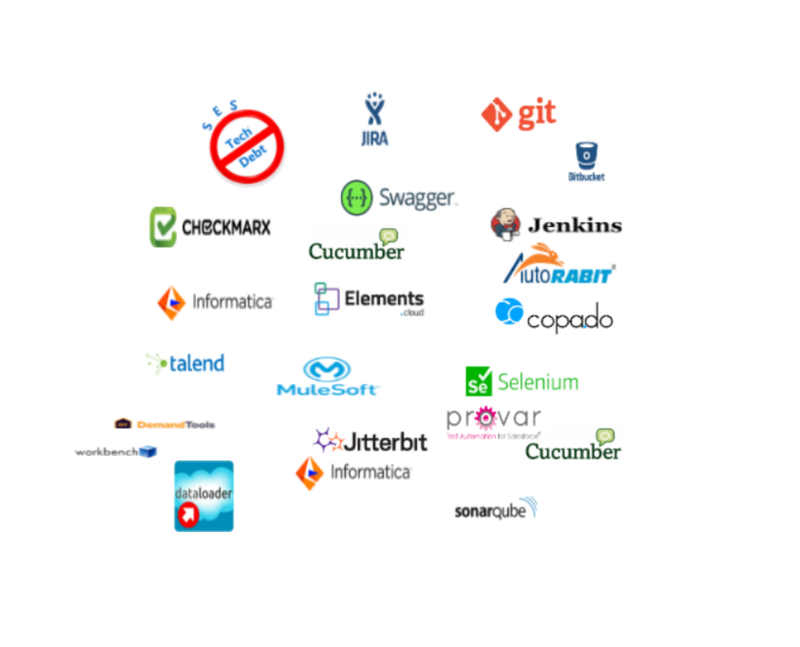S E S
Say No To Technical Debt And Use Self Evolving Software
Features
Task Matching
Using our proprietary AI develop code automatically from written English requirements similar to Chat GPT. SES uses supervised training to continually learn and can even self learn by scanning your code, searching for intriguing functions. Also, similar to Einstein GPT's Trust layer with SES you can place guardrails around new functions built by our AI.
Code Quality Analysis
Using SES mathematical algorithms you gain a deeper understanding of your code than is possible using tools like CheckMarx, PMD and SonarQube. Hidden defects in your code are exposed that other tools cannot discover.
Snippets
Rapidly shorten development cycle time (by 50%+) by selecting pre-built snippets of code. Also capture, analyse and gain insights through Code Review sessions.
Duplicate Code Analysis
Stops developers producing duplicate code which slows down delivery and system performance. Making code more manageable and understandable.
Dead Code Analysis
Cleaner systems make more manageable systems and easier to diagnose and fix. SES identifies under-used as well as dead code to make a more efficient system.
Jira Enabled
Direct bi-directional flow of requirements between Jira and SES aids smooth project and program delivery.
Hub and Spoke
SES is uniquely able to perform analysis on targeted Spoke Salesforce systems without having to be installed in the Spoke system and returning analysis results to the Hub Salesforce system.
Auto Technical Documentation
Automatically create technical documentation consistently, describing code structure, dependencies and code analysis statistics. New developer on-boarding, defect fixing and new feature build times are reduced.
Object Requirement Gathering
Ensures business requirements for objects and fields are captured accurately, consistently and quickly through SES's guided journey interactive wizard. Eliminates multiple change requests and deployments.
Frameworks
With SES Frameworks you can build in seconds entire apex trigger frameworks; a framework for creation of simple or complex unit test data. SES Frameworks saves you valuable development time and speeds up your delivery.
CASE STUDIES
Case Studies provided by our valued customers
SalesFlags
Open Case Study
WHAT OUR CUSTOMERS SAY
What You Can Always Expect From Us
FUN
Pricing
Tier 1
- 0 to 1 million characters
- Includes Production + 3 sandboxes
- Free support hours per month
- Additional sandboxes @ £200
- Additional orgs @ £395
Tier 2
MOST POPULAR
- 1 to 3 million characters
- Includes Production + 3 sandboxes
- Free support hours per month
- Additional sandboxes @ £320
- Additional orgs @ £1,035
Tier 3
- 3 - 10 million characters
- Includes Production + 3 sandboxes
- Free support hours per month
- Additional sandboxes @ £560
- Additional orgs @ £1,830
Tier 4
- > 10 million characters
- Includes Production + 3 sandboxes
- Free support hours per month
- Additional sandboxes @ £870
- Additional orgs @ £2,400
About Us

Our founder witnessed time again development teams not re-using code and functions, wasting huge amounts of development time and adding to code proliferation that subsequently made systems less manageable and further slowed
down the development process.
So, SES was founded to address this 1 primary objective, to create a native Salesforce app to make the development process far more efficient and to maximize the re-use of code and Visual Flows.
For this to be effective SES would have to understand requirements written in English and to match with existing Visual Flows, code and functions; then to automatically write new functions using the matched function.
Resulting in expediting Salesforce projects compared to traditional IT projects.
Our founder quickly realised that this was just the start of the journey. It was essential the developer could train SES so that SES could evolve beyond it's confined programmatic algorithm, the SES artificial intelligence engine was born.
The story did not stop here; SES needed to analyse existing duplicated and near duplicate code to help stablise existing systems. The 'Duplicate Code Analysis' module now complemented the AI module.
It was equally apparent developers would leave code in the system which was either not used or under-used, leading to the inclusion of the 'Dead Code Analysis' module.
Developers would use the output from our AI module and add their own artistry to the code to complete the code. What SES needed was a native code editor within SES, specifically for the purpose to fulfill our number 1 objective, to ensure maximum re-use of code and functions. The Snippets module was added to the family.
SES had now metamorphosed, growing beyond its original intentions. What later precipitated were additional modules improving efficiency across the Software Development Lifecycle, including Code Quality Analysis, and if code quality is important to you this module will compliment your current static code quality tools.
Automatically constructs configurable and branded documentation, equipping teams so they can manage and design systems more effectively
SES is now uniquely positioned to tackle major challenges faced by development teams, consistent and reliable requirements capture, re-use of code, removal of dead code, identify under used code, static code quality analysis beyond CheckMarx, deeper insights to peer code reviewing and improvement opportunities and well documented code artifacts.
With SES, you can develop and deliver new functionality quicker, making SES customers more successful and enabling companies to have more ambitious development road-maps.
Top Questions
Can I try SES out for a period?
SES features are wide ranging across the entire SDLC. Where do I begin?
Are requirements gathering poorly captured?
Is your development process too slow?
Do you have too much duplicated code?
Are you suffering from code quality issues?
Once you understand where your main issues are our Success Managers will guide you of how to maximise benefit from our app
And when you need immediate help there are many tutorial videos, help documents and help tips throughout the app providing further guidance.
Does any of my code escape out of my Salesforce environment?
Installing SES into hundreds of clients of an SI will take too much time.
For customers with very strict security policies preventing any apps being installed in their system, SES uniquely satisfies even the most strictest of security policies.
What happens if my code base grows, do I pay more?
But our features help you to control code growth using Duplicate code analysis, Dead code analysis and our features generally promote re-use of code.
Do I pay only for 1 subscription for Hub and Spoke?
How can I know what SES is developing on their roadmap?
KNOWLEDGE CENTER
Here are some of the knowledge articles from the SES Knowledge Center. Customers will gain full access to the complete SES Knowledge Center
SES API's
Run Code Quality Analysis
Code Review and Statistics
SES Special Commands
To learn more about the commands open the document
Open Document
Blog
This is a generic blog article you can use for adding blog content / subjects on your website. You can edit all of this text and replace it with anything you have to say on your blog.
Read MoreThis is a generic blog article you can use for adding blog content / subjects on your website. You can edit all of this text and replace it with anything you have to say on your blog.
Read MoreThis is a generic blog article you can use for adding blog content / subjects on your website. You can edit all of this text and replace it with anything you have to say on your blog.
Read MoreThis is a generic blog article you can use for adding blog content / subjects on your website. You can edit all of this text and replace it with anything you have to say on your blog.
Read More